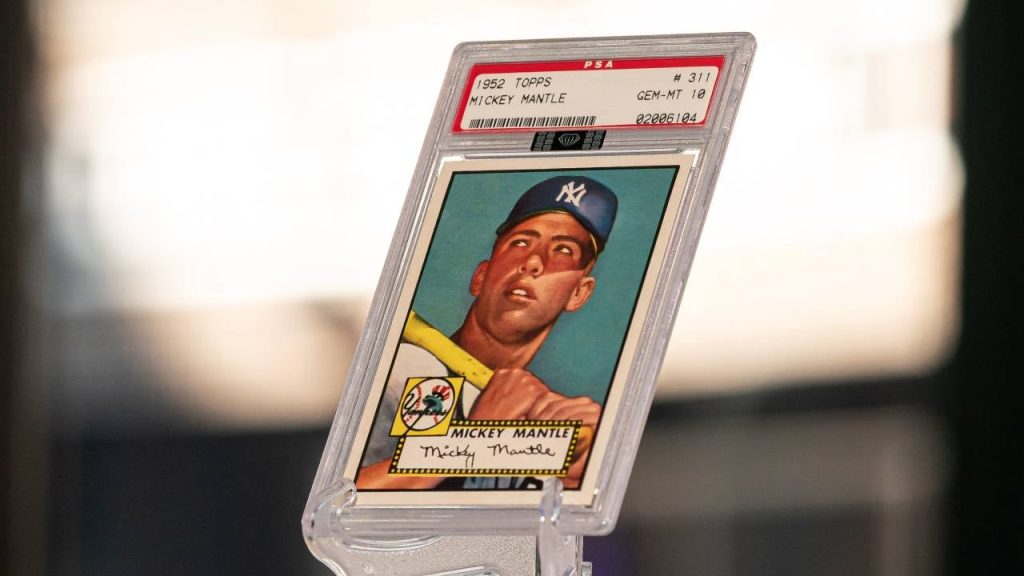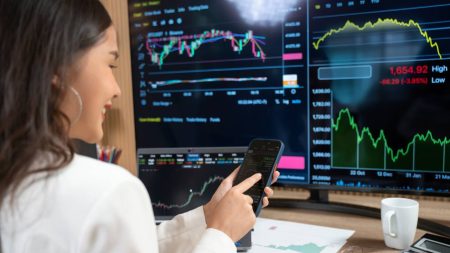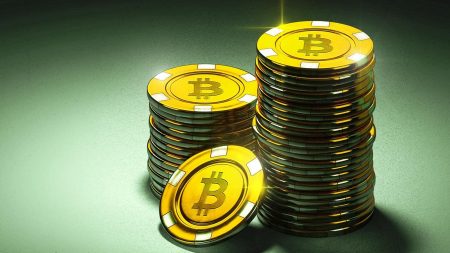Investors have long been searching for alternative assets, and collectibles offer a brave new world for those hardy hustlers willing to risk their money. While they don’t have the track record of real estate or private equity investment, collectibles such as art have fared well.
But a range of other collectibles is increasingly on offer — not only old favorites such as sports cards or coins, but potentially faddish choices like handbags, shoes, non-fungible tokens (NFTs) and everyone’s favorite Danish toy, Legos, among a flood of others.The danger for those owning collectibles is that interest could move on to the next thing, leaving them holding the bag.
With the global economy spinning off record wealth, it’s not surprising that collectors follow their passion and bid up the prices of these aesthetic pleasures. But those looking to turn a collection into real wealth will want to keep a keen eye on changing tastes and fickle fashion.
What are collectibles?
The IRS offers some guidance on what counts as a collectible, and the classification includes the following:
- A work of art
- NFTs
- Rugs or antiques
- Gems
- Stamps
- Certain coins
- Precious metals
- Alcoholic beverages such as wine or brandy collections
- Anything else the IRS defines as a collectible
The last item on the list gives the taxman carte blanche for determining what counts under its rules, so newer items that suddenly become en vogue can easily be categorized here. While luxury watches are not specifically named, they might count, at least in some circumstances.
How to invest in collectibles through a company
For some kinds of collectibles, you’ll have to literally go out and buy them directly, while more established types of collectibles such as art, wine or spirits may also offer “institutionalized” ways of investing in them. These latter collectibles may be easier to invest in, but you’ll end up paying someone to “curate” the portfolio, find what items to buy and when best to sell them.
For example, those looking to invest in art could turn to Masterworks. The company analyzes and purchases primarily contemporary artwork, and then sells shares in the pieces to investors. The firm holds art from three to 10 years, and when it sells, investors receive their proportional share of the proceeds, minus a 20 percent cut of the profits for Masterworks. Alternatively, investors can sell their shares in an internal market, though liquidity isn’t guaranteed. The firm charges a steep 1.5 percent annual fee, which is deducted from your equity holdings there.
Investing platform Yieldstreet offers a similar setup with a diversified group of art in one fund.
Some similar options exist for investing in spirits. For example, at WhiskyInvestDirect, investors can invest in barreled whisky that’s held at the distiller’s warehouse. Investors can sell via the firm’s exchange to investors and those in the industry at competitive prices, with mature whisky bought by industry having returned 15 percent annually after investors’ expenses, says the firm.
Platforms such as Vint and Vinovest also facilitate investing in wine and spirits.
For other collectibles, you’ll need to do the legwork yourself and have your wits about you.
How do you invest in newer collectibles?
Of course, you can also invest in art directly, if you know what you want and what counts as a good price, and many other less-established collectibles work the same way. As an investor, you’ll need to know the market well and be able to source and purchase individual items.
1. Know the market cold
If you’re trying to invest in other collectibles such as stamps or coins or sports cards, you must know the market well:
- What items remain consistently popular over time? (That is, what are the blue chips?)
- Where is the market moving and what’s becoming more popular?
- What is the right price to buy and sell each item?
- Which segment of the market is becoming less popular?
- Who’s buying and why are they buying?
Knowing the market completely can help you anticipate trends and what buyers may want, and it also helps you anticipate areas of weakness, protecting your downside on your investment. If buyers are moving away from one area of the market, you can refrain from investing there and instead focus new investments in the area that is growing or growing faster.
For example, it’s vital to pay attention to what could drive sentiment for sports memorabilia. A new sports card may be hot now, but its price could decline as a player becomes less popular or on-field performance wanes. In contrast, cards featuring Hall of Fame players may retain their value better because their place in the pantheon of heroes is set and performance cannot fade.
2. Develop a network of suppliers and contacts
If you’re investing regularly in collectibles, it’s valuable to have a network of suppliers to whom you can consistently turn. This group could include specialized dealers who trade in your collectible or perhaps contacts that may be able to source off-market deals, especially for newer goods. Or it may even mean having a list of retailers where you can scour for deals.
If you’re really trying to turn inventory and not just hold it, then you’ll need to keep replenishing your supply of investments and you have to have a robust pipeline to keep generating sales. Your network of suppliers can help replenish your own stable of investments. Trade shows can be a great place to meet like-minded individuals and get the inside scoop on happenings.
A good network can also help you get a sense for where the market is trending, too. Where are your contacts seeing demand increasing or decreasing? Where do they see the market moving? What prices are they getting on their own sales? It’s all valuable info for your own operation.
You can also use your network to make connections with other dealers who may be looking to offload inventory that they’ve held too long or where you may have a ready buyer.
3. Develop a list of buyers
If you’re looking to actively sell your investments and not just hold them, then it’s useful to cultivate a list of buyers, especially those who are willing to buy from you repeatedly. Repeat buyers may value your keen eye for market trends, your ability to source hard-to-find collectibles or just your sparkling personality as you chat about the collecting passion that you both share.
Regardless, it can be useful to understand your buyers and what they’re looking for, because it can help you decide what to invest in and where the market is moving. Plus, it allows you to source deals at lower risk if you know that they’re a willing buyer of the item. If you can buy from a supplier and then immediately sell that collectible to a waiting investor, it can be a quick win.
4. Anticipate the trends
It’s probably hard to overstate the importance of anticipating the trends in your specific market for collectibles. Collectibles that were once popular may quickly become the stale knick-knacks of an aging generation. Your investment may be subject to a fickle public that’s always looking for the next cool thing to buy. And you want to be out in front of that trend if you’re looking to sell.
For example, sports cards had their heyday in the 1980s and then many became utterly worthless. Of course, some exceptions exist, such as the relatively rare cards featuring Hall of Famers produced before that boom, for example. If the market explodes with oversupply, you want to anticipate that and understand where things are moving so that you invest well.
Unlike the best investments such as high-quality stocks and stock funds, collectibles don’t inherently generate cash flow. So you really could wind up with investments that are worth little or nothing if the public is no longer interested in collecting your favorite items. One of the most recent examples is the precipitous drop in value of NFTs, which were among the hottest collectibles in 2020 and 2021 but have virtually fallen off the map since then.
By anticipating the trends, you’ll know when to hit the sell button. Still, many collectibles have a surprisingly long shelf life, but generations change and one’s collectible is another’s trash.
What to watch out for when investing in collectibles
If you’re looking to invest in collectibles, pay particular attention to the following issues.
Watch out for forgeries and fraud
One of the biggest dangers for investors in collectibles is the risk of purchasing a forgery or an otherwise fake item. With high prices placed on various older and rarer items such as sports cards, coins and art, fraudsters have plenty of incentive to create their own version and pass it off as the real thing. Having a strong knowledge of the market can help you avoid these fakes.
But many collectors turn to authentication and grading services to verify items. For example, PSA offers these services to those investing in sports cards, autographs and other memorabilia. These services can help ensure that you’re buying what you think you’re buying and may rate the condition of the item, helping sellers fetch a better price for the genuine collectible.
Scammy dealers
It’s important to develop a network of suppliers, but you want to steer clear of scammy dealers at all costs. Even an honest dealer can mistake a high-quality fake for the real thing from time to time, but the good dealers do their best to cater in only genuine items.
Also beware of third-party sites where you may not be able to verify the quality of the good or the reputation of the dealer hawking it. While plenty of honest people use them, it can be easy for a newer investor-collector to fall for a scam here. A good network helps protect you against fraud.
You could wind up with nothing
Collectibles generate no cash flow, unlike businesses. If you own a fractional ownership interest in a company — a stock — then the price of that investment tracks the business over time, and there’s a ready market of buyers and sellers for these stakes on exchanges. But collectibles don’t generate cash, even if you can end up selling them for more than you paid for them. That’s the key reason that legendary investor Warren Buffett won’t invest in such assets, even gold.
If your collectibles market hits a downturn, it may never recover if collectors don’t come back to it. That’s why it’s so important to keep watching the trends in your space.
Invest in collectibles you love
Because your collectibles may end up being worth nothing, it’s important that you love what you collect. Buy art because you like to look at it, not because you think it could be worth more. Buy for the aesthetic pleasure a collectible brings you, and if you can sell it for more, good for you.
Buying what you love is also valuable in the other aspects of being successful. It helps you stay on top of market trends, develop a network of contacts that can help you invest better and so on. If you have a passion for it, you’ll be more motivated to do the work than just doing it for money.
Bottom line
Investing in collectibles can be lucrative if you know what you’re doing, but you’ll have to keep a sharp eye on trends in the market, particularly whether interest in your type of collectible is growing or shrinking. The last thing you want is to be left holding a bag of collectibles that no one is interested in, as investors in NFTs found out quickly in the last few years.
Editorial Disclaimer: All investors are advised to conduct their own independent research into investment strategies before making an investment decision. In addition, investors are advised that past investment product performance is no guarantee of future price appreciation.
Read the full article here










